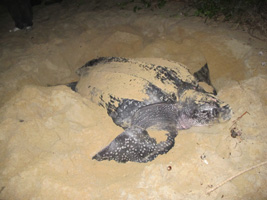
Female leatherback digging a nest on Matura Beach, Trinidad

She lays about 85 eggs per nest and about 4-5 nests in one season
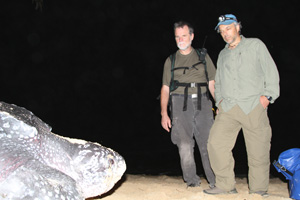
Carl with Dr. Scott Eckert, Director of Science for WIDECAST, Wider Caribbean Sea Turtle Conservation Network
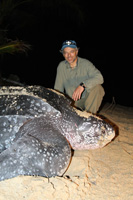
Leatherbacks are the largest sea turtles in the world, weighing up to 2000 lb
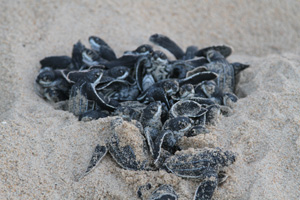
Hatchlings emerge at sunset or night when the sand is cooler, allowing them to evade beach predators

Only one in a thousand hatchlings will make it to adulthood
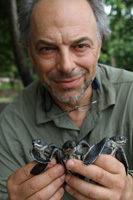
Hopefully, some of these hatchlings will return to nest in about 35 years
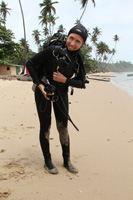
Underwater cameraperson Valentina Cucchiara gears up for the rough waters off Trinidad’s north coast

The crew searches for elusive leatherback turtles at sea
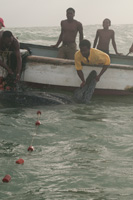
Gillnets entangle more than 4000 leatherbacks a year in Trinidad alone. One in three survive
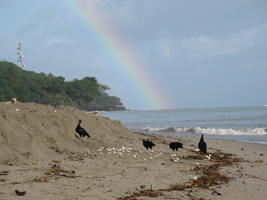
Beach erosion exposes leatherback eggs to predators like vultures and dogs
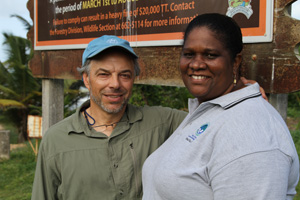
Carl with Suzan Lakhan Baptiste, founder of the turtle conservation group--Nature Seekers

The hardworking team. From left to right- soundman Tim Wessel, cameraman Dan Lyons, underwater cameraperson Valentina Cucchiara, host Carl Safina and director Dave Huntley



